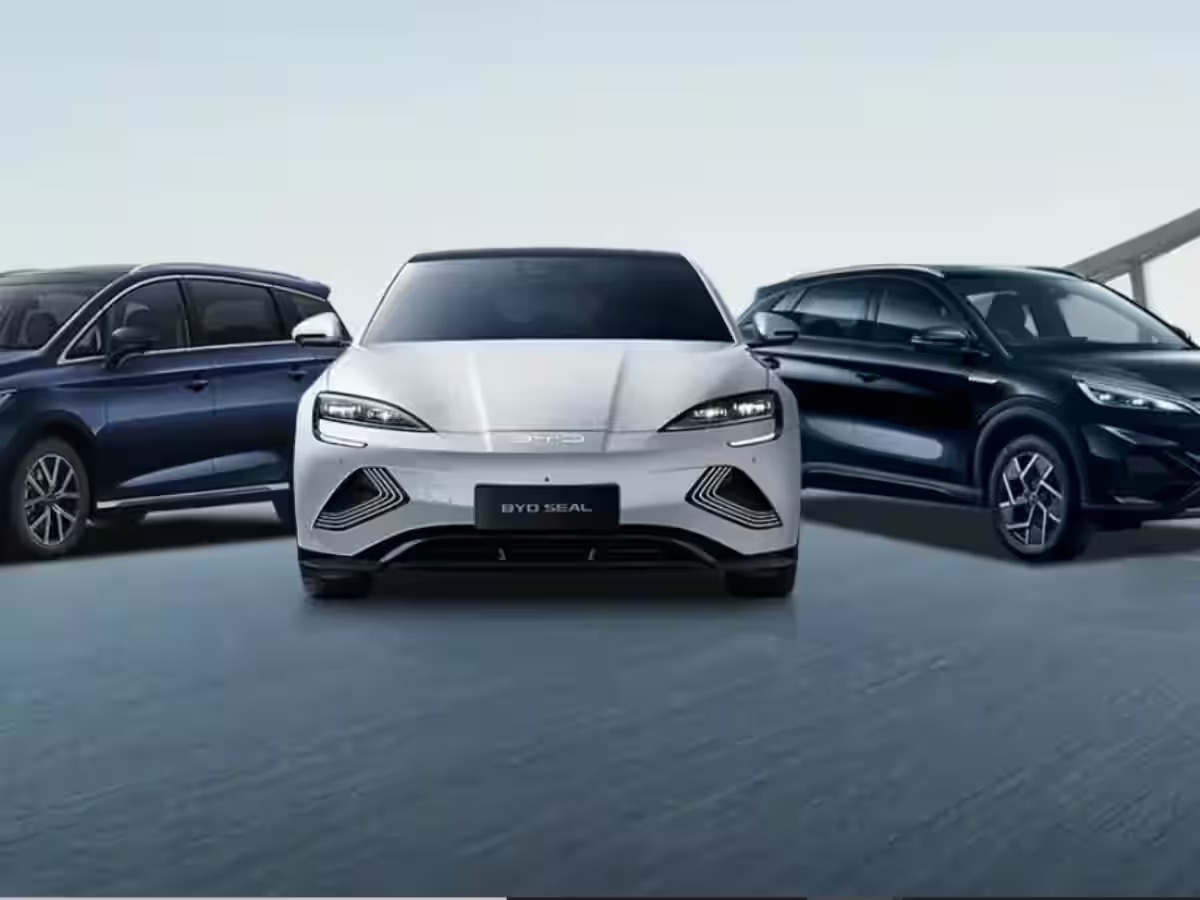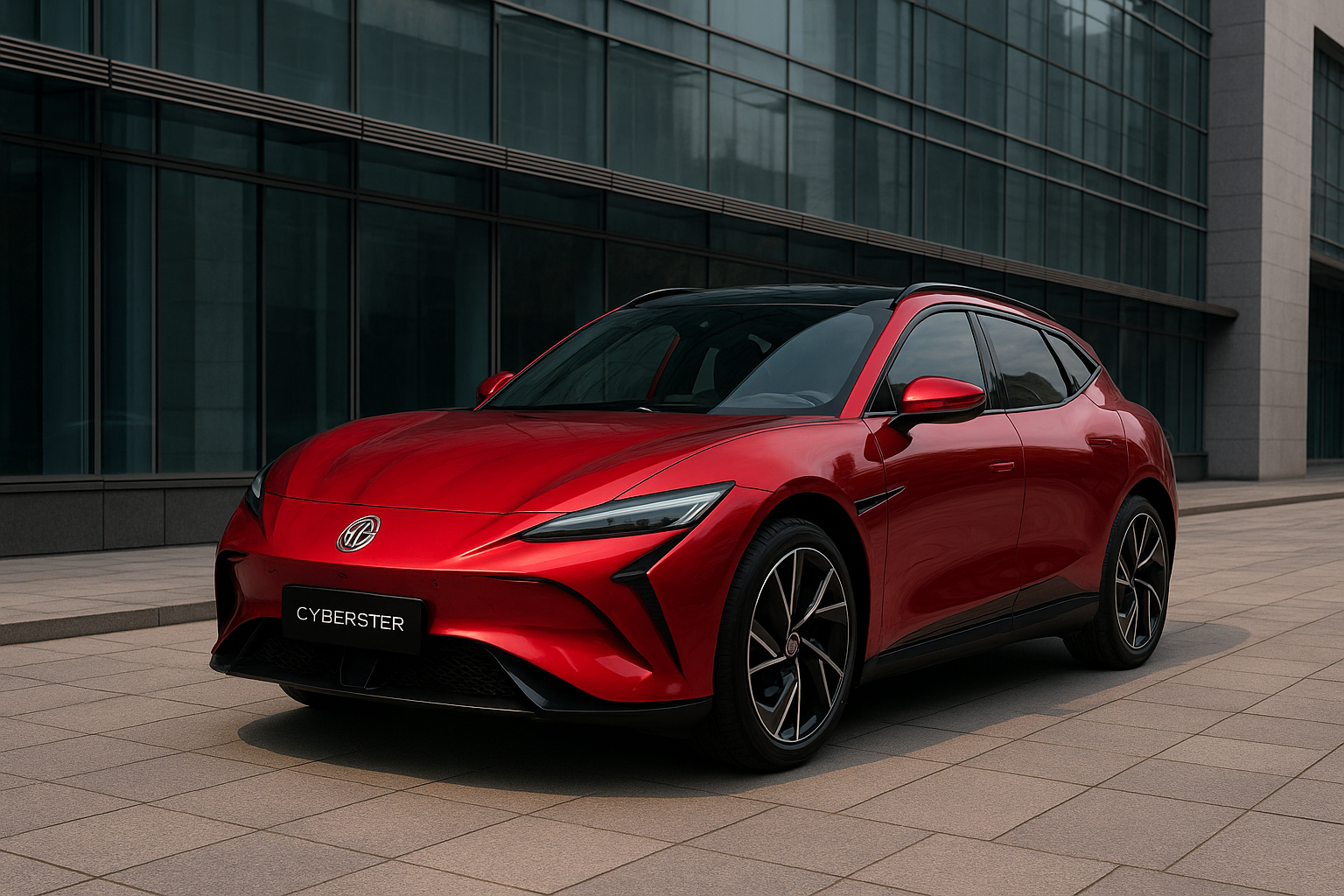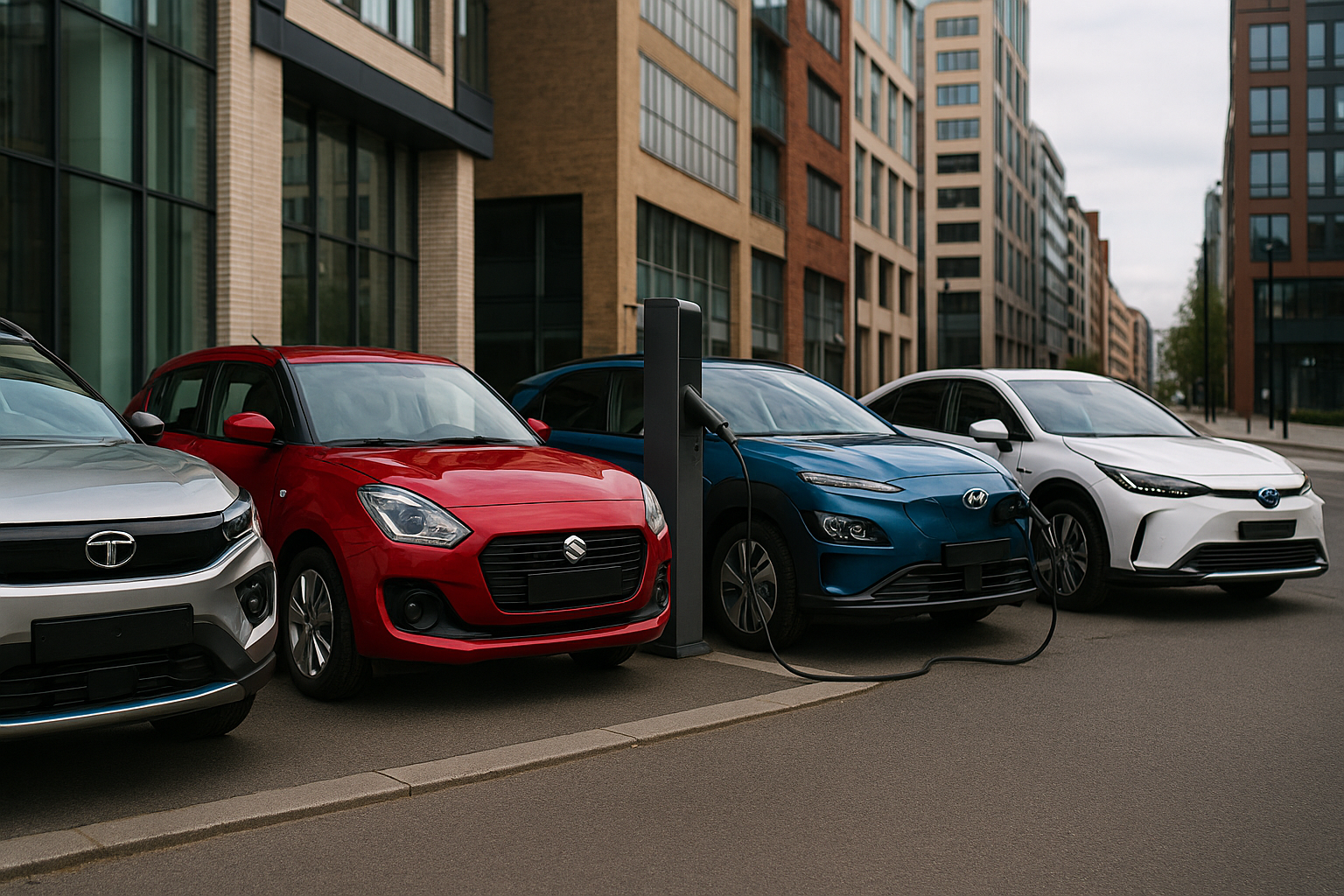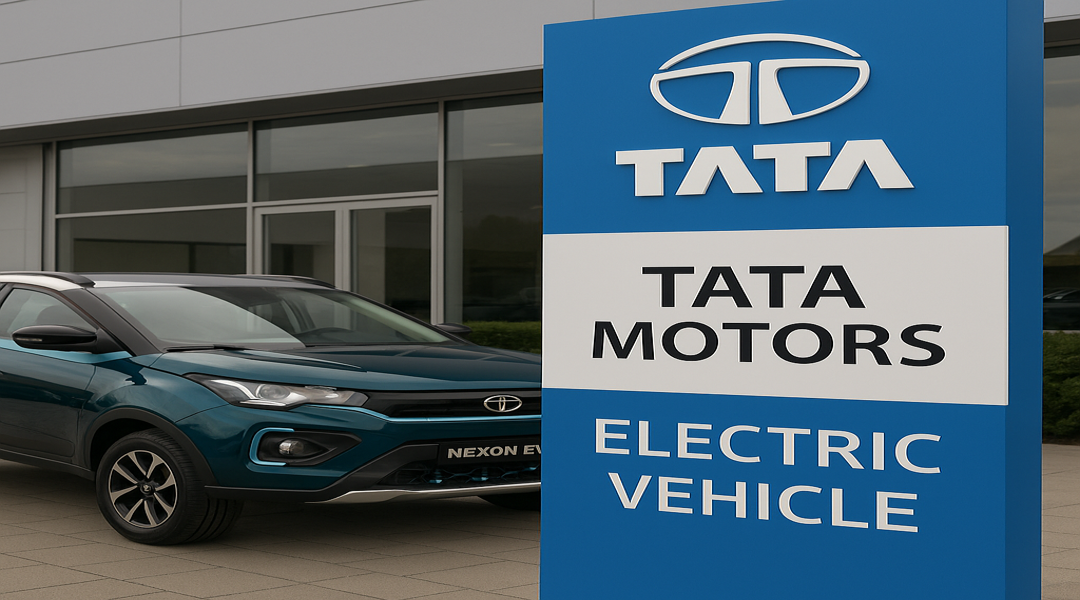EV news
BYD Declines Short-Term Application for India’s New EV Policy Benefits

Chinese electric vehicle (EV) manufacturer BYD has decided not to seek benefits from India’s new EV policy immediately. The Indian government introduced the policy in March, aiming to attract global EV manufacturers like Tesla. The policy allows reduced customs duties for importing vehicles and aims to boost local manufacturing.
Key Aspects of India’s New EV Policy
India’s new EV policy offers a reduced 15% customs duty on imported electric cars priced at USD 35,000 or more. This benefit is available for five years. It is intended to encourage companies to set up local production facilities in India. To qualify, manufacturers must invest Rs 4,150 crore (USD 500 million) in an Indian manufacturing plant. The plant must become operational within three years. In addition, the company must achieve 25% domestic value addition (DVA) in the same period, with a goal of reaching 50% in five years.
Manufacturers can import up to 8,000 completely built units (CBUs) per year at the reduced rate. Any unused import quota can be carried over to the next year.
BYD’s Decision on the Policy
Rajeev Chauhan, BYD India’s Head of Electric Passenger Vehicles Business, announced that the company would not apply for these benefits in the short term. After reviewing the policy, BYD concluded that the company is not ready to commit to it yet. “We are not applying,” Chauhan said.
BYD is focusing on using homologation to meet demand in India. This process certifies vehicles for road use under Indian regulations. Chauhan mentioned that BYD would observe the market before deciding on long-term investments. For now, the company prefers to take smaller steps.
BYD’s Homologation Strategy
BYD will import the eMAX 7 multipurpose vehicle (MPV) and SEAL sedan under the Economic Commission for Europe (ECE) certification. This method limits BYD to importing 2,500 units. Chauhan said BYD will explore gaps and opportunities in the market. When demand exceeds government limits, BYD will consider using homologation instead of local production.
This strategy allows BYD to expand in India without a large upfront investment in local manufacturing. Chauhan emphasized the advantages of eventually having a manufacturing plant but noted the company isn’t there yet.
BYD’s New Vehicle Launch
Recently, BYD launched the all-electric eMAX 7 MPV in India. Priced between Rs 26.9 lakh and Rs 29.9 lakh, the MPV comes in six-seat and seven-seat variants. The eMAX 7 showcases BYD’s commitment to innovation and sustainability. Chauhan said the vehicle reflects the company’s dedication to bringing the latest global technology to Indian consumers.
BYD’s decision to import rather than produce locally aligns with its cautious approach. By importing vehicles under ECE certification, the company can test the waters before committing to larger investments.
Impact of Geopolitical Tensions
Chauhan declined to discuss challenges related to geopolitical tensions between India and China. However, the current political environment likely plays a role in BYD’s cautious approach. The company’s choice to avoid long-term commitments for now may be partly influenced by these external factors.
Long-Term Outlook
Though BYD has chosen not to take immediate advantage of the new EV policy, the company remains open to future developments. Chauhan indicated that BYD’s long-term plans will require patience. The company will continue to assess the market and respond to consumer needs.
For now, BYD’s focus is on ensuring success with its current models, like the eMAX 7 and SEAL sedan. If these models perform well, BYD may reconsider its stance on applying for benefits under the policy.
Conclusion
BYD’s decision to delay applying for India’s EV policy benefits shows a careful strategy. The company aims to explore the market through homologation before committing to large investments. With models like the eMAX 7 already available, BYD continues to bring innovation to Indian consumers while keeping its long-term options open.
Article By
Prashant Sharma
Blog
MG’s Cyberster: India’s Upcoming Premium Electric SUV Set to Launch in July 2025

A Bold Step Into India’s Luxury EV Market
So, MG is about to bring out something pretty cool — the Cyberster, a premium electric SUV, expected to launch around July 2025. It’s their way of stepping up in India’s electric vehicle game and offering something that’s not just green, but also stylish and packed with tech.
EVs are getting popular here, and MG wants to be part of that wave, especially for folks who want a good-looking, comfy ride that’s loaded with modern features.
Striking Design Meets Cutting-Edge Technology
We don’t have all the info yet, but the Cyberster looks sharp. Think sleek and sporty, something that’ll catch eyes on the road.
Inside, expect lots of screens, smart features, and safety tech — basically, everything you’d want to make your drive smooth and fun. Whether it’s a quick city run or a weekend escape, this car’s aiming to make every trip enjoyable.
Performance That Packs a Punch
If you’re paying for a premium electric SUV, you want it to perform, right? While details are still under wraps, MG usually doesn’t disappoint. Expect a good driving range and enough power to make driving fun.
And with fast charging, you won’t be stuck waiting around forever — a big plus for busy folks.
What the Cyberster Means for Indian Consumers
This car means more choice for buyers who want a premium EV. The market is heating up, and it’s great because it gives you options that fit your style and budget.
MG is known for giving good value, so this might be a premium ride without the crazy premium price tag.
Growing Competition: A Win for Buyers
More companies entering the EV space means the competition’s getting fierce — Tata, Mahindra, Hyundai, and now MG all want your attention.
That means better cars, better prices, and more charging stations popping up, making EVs easier to own.
MG’s Vision for India’s EV Future
The Cyberster is just the start for MG. They’re clearly aiming to be a big player in India’s EV scene by giving buyers stylish, tech-packed cars.
As India moves toward greener transport, cars like this will help make electric vehicles the new normal.
Article By
Sourabh Gupta
Blog
India’s EV Market Heats: More Players, More Competition

The Electric Vehicle Battle Is Just Getting Started
You know how things are changing fast with electric vehicles here in India? Well, it’s no longer just a couple of companies in the game. Tata and Mahindra have been leading for a while, but now Maruti, Toyota, and Hyundai are jumping in too. It’s turning into a proper race, and that’s great news for anyone thinking about buying an EV.
More players mean more choices, and when companies compete, it usually means better deals and cooler cars for us.
New Entrants Bring Fresh Energy
Maruti Suzuki is like the go-to brand for most Indian families because their cars are affordable and reliable. Now, if they start selling EVs, it’s going to make electric vehicles a lot more reachable for everyday folks.
Then you have Toyota and Hyundai, which have been working on electric cars globally for years. They’re bringing that know-how to India, which means better technology and cars designed to handle our roads and conditions.
This fresh blood is going to push everyone to do better, which is a win for all of us.
What This Means for Consumers
For buyers, this is the best time to consider an EV. You’ll get a wider choice of vehicles — from simple and affordable models to fancy ones packed with features.
Also, with so many companies competing, expect better batteries that last longer, faster charging times, and prices that won’t scare you away.
Charging stations will become more common, making it easier to own and use an EV without stress.
Challenges for Established Players
Tata and Mahindra have done well so far, but now the heat’s on. They’ll need to keep improving their cars and customer service to stay ahead.
More competition means prices might get friendlier, and cars will keep getting better, which is good news for everyone.
The Road Ahead: A Win for India’s Green Future
All this competition will speed up EV adoption, which means cleaner air and less pollution.
With more companies investing in EVs, we’ll see more charging points, better batteries, and more jobs related to green technology.
The future looks electric, and it’s shaping up to be an exciting ride.
Article By
Sourabh Gupta
Blog
Tata Motors Sets Sights on Dominating 50% of India’s EV Market

A Bold Ambition in a Growing Industry
Tata Motors isn’t just aiming to be in the EV race — they want to lead it. A recent ET Auto report says Tata wants to grab half of India’s electric vehicle market, which is a pretty big deal.
India’s EV scene is growing fast. More people are thinking about electric cars because petrol prices keep climbing, and folks want cleaner air. With all this happening, Tata’s shooting for the top spot, wanting to hold a massive share of the market.
Where Tata Motors Stands Today
Right now, Tata is the go-to name when it comes to EVs in India. The Nexon EV is one of the best-selling electric SUVs in the country. They’ve also got other models like the Tiago EV and Tigor EV that cover different budgets and needs.
But Tata knows it can’t just sit back and relax. Other brands like Mahindra, MG, and Hyundai are also pushing hard. Tata’s got to keep coming up with new stuff and get better if they want to stay ahead.
How Tata Plans to Achieve Its 50% Goal
So, how do they plan to take over half the market? They’ve got a few things lined up:
Expanding Its EV Lineup
Tata’s working on some cool new electric cars like the Harrier EV, Curvv EV, and the fancy Avinya. These options will give customers more choices, whether they prefer something small and practical or large and luxurious.
Building More Charging Stations
One of the biggest worries about EVs is charging. Tata’s working with Tata Power to set up more chargers across cities and towns. The easier it is to charge, the more people will want to buy EVs.
Making Batteries in India
Batteries are the priciest part of EVs, and importing them adds to the cost. Tata wants to make batteries right here in India, which should help bring prices down.
Going After Fleets and Government Buyers
Tata’s not just focusing on people buying cars for themselves. They’re also selling EVs to taxis, delivery companies, and government fleets. That’s a smart move because these buyers buy in bulk.
Challenges Ahead
It won’t be a smooth ride, though. Tata still has some bumps to cross:
- Battery supply might not always keep up with demand.
- Other companies are catching up fast.
- Not all towns have enough charging points yet.
- Convincing people outside cities to switch to EVs takes time.
The Road Ahead
Tata wants to own half of India’s EV market, and while that’s a huge goal, they have the right plan and the brand to pull it off. For buyers, this means better cars and more choices soon. For India, it’s a cleaner, greener future.
Article By
Sourabh Gupta
-

 Blog6 months ago
Blog6 months agoIndia’s Electric Vehicle Market Forecast to 2028 A Rapidly Growing Industry
-

 Blog12 months ago
Blog12 months agoTop 10 Electric Vehicles of 2024: A Comprehensive Guide
-

 Blog1 year ago
Blog1 year agoImpact of Electric Vehicles on the Environment and Pollution
-

 Blog12 months ago
Blog12 months agoTop 5 best electric vehicles Under $30,000: Affordable Choices for 2024
-

 EV news6 months ago
EV news6 months ago2025 Might Be the Time of EVs in India, Drove by SUV Dispatches
-

 Blog1 year ago
Blog1 year agoEV Charging Technology: Leading the Electric Vehicle Innovations in 2024
-

 EV news9 months ago
EV news9 months agoOla Electric Offers Massive Festive Discounts on Scooters Starting at ₹50,000
-

 Blog6 months ago
Blog6 months agoMahindra BE 6 An Intense Move toward the Fate of Electric Versatility




